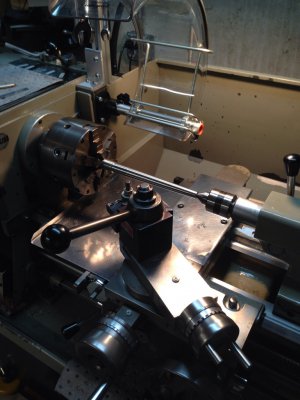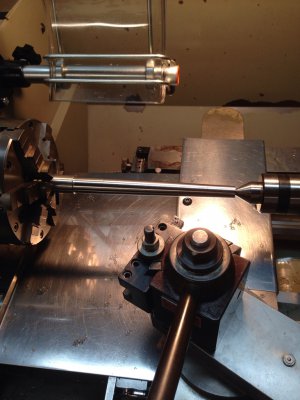- Joined
- Aug 27, 2014
- Messages
- 65
If I understand your need for "math" correctly, I will share with you some math from the Dividing Head book by David Gingery that I have been reading - it will do me some good to exercise myself in this.
First, you know the pitch of the tap or hob that you will be using. You need to convert the pitch to distance from one tooth to another. So a tap with a 16 pitch has 1/16 or .0625" from one tooth to the next.
This needs to match the pitch of the worm wheel that you are making. So the "circular pitch" (C.P.) of your wheel is equal to the pitch of your tap. So in the example here, the wheel also will have a C.P. of .0625.
Diametrical pitch is calculated by: D.P. = 3.1416/C.P.
So, in our example, the wheel would have a D.P. of 3.1416/.0625 = 50.
Now you can start working on the size of that wheel because the outside diameter of you blank can be estimated by (N+2)/ D.P., where N is your choice of the number of teeth in the wheel. Play with this until you get a wheel "as big as the space will allow".
Then, more accurately, you can get the outside diameter of your blank by adding two "addendum" to the "pitch diameter".
Where the pitch diameter = N/D.P.
And addendum = 1/D.P.
So, the O.D. = (N/D.P.) + 2(1/D.P.)
The depth of your cut will be = (2.2/D.P.) + .002"
Okay, I hope that helps you
Bob
First, you know the pitch of the tap or hob that you will be using. You need to convert the pitch to distance from one tooth to another. So a tap with a 16 pitch has 1/16 or .0625" from one tooth to the next.
This needs to match the pitch of the worm wheel that you are making. So the "circular pitch" (C.P.) of your wheel is equal to the pitch of your tap. So in the example here, the wheel also will have a C.P. of .0625.
Diametrical pitch is calculated by: D.P. = 3.1416/C.P.
So, in our example, the wheel would have a D.P. of 3.1416/.0625 = 50.
Now you can start working on the size of that wheel because the outside diameter of you blank can be estimated by (N+2)/ D.P., where N is your choice of the number of teeth in the wheel. Play with this until you get a wheel "as big as the space will allow".
Then, more accurately, you can get the outside diameter of your blank by adding two "addendum" to the "pitch diameter".
Where the pitch diameter = N/D.P.
And addendum = 1/D.P.
So, the O.D. = (N/D.P.) + 2(1/D.P.)
The depth of your cut will be = (2.2/D.P.) + .002"
Okay, I hope that helps you
Bob


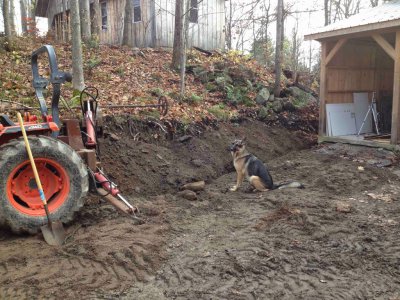

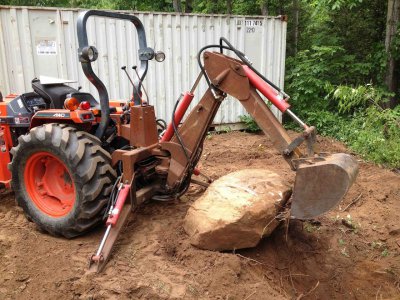
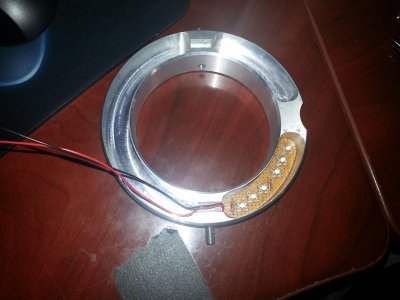
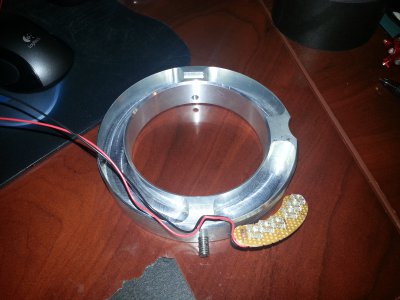
 . The angle i ran the tool at to clear the live center made the chip miss the chip breaker on the insert. Im going to make the guy his sample pc but he needs 200 pcs. Afraid me gonna have to call my friend w cnc's to do that many or Ill be turning cranks for a year of sundays and wear out my little lathe!!
. The angle i ran the tool at to clear the live center made the chip miss the chip breaker on the insert. Im going to make the guy his sample pc but he needs 200 pcs. Afraid me gonna have to call my friend w cnc's to do that many or Ill be turning cranks for a year of sundays and wear out my little lathe!! 